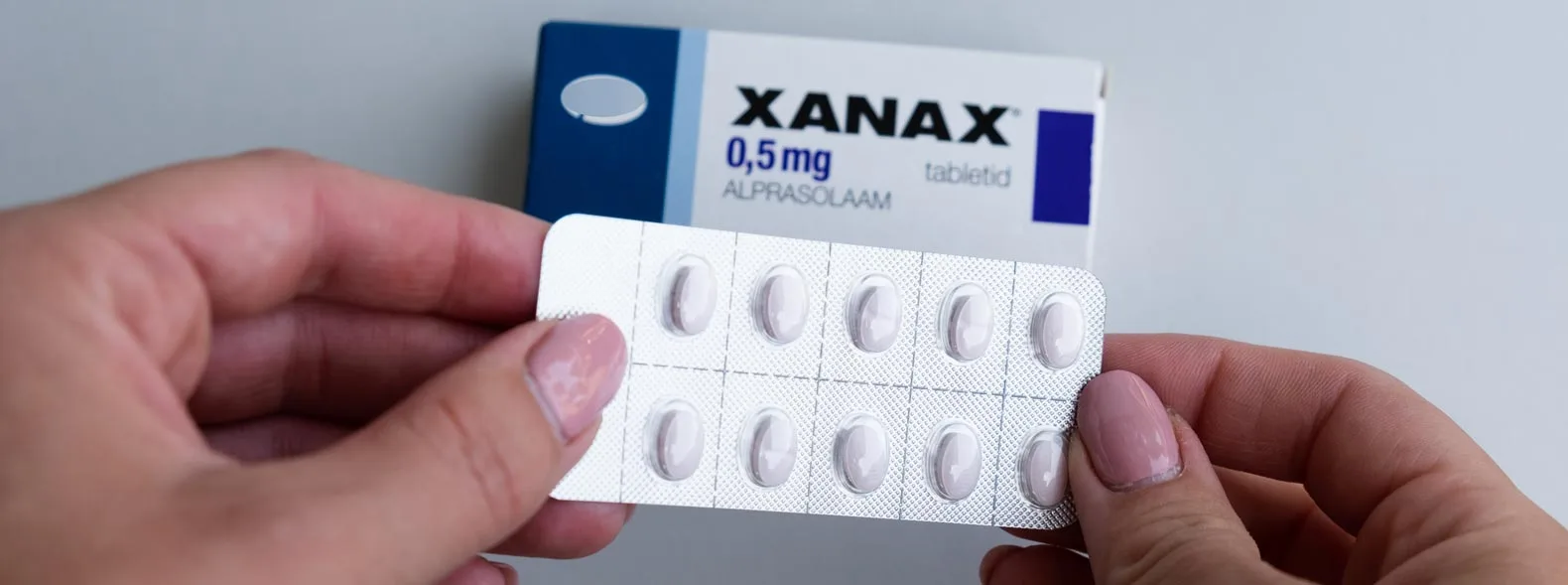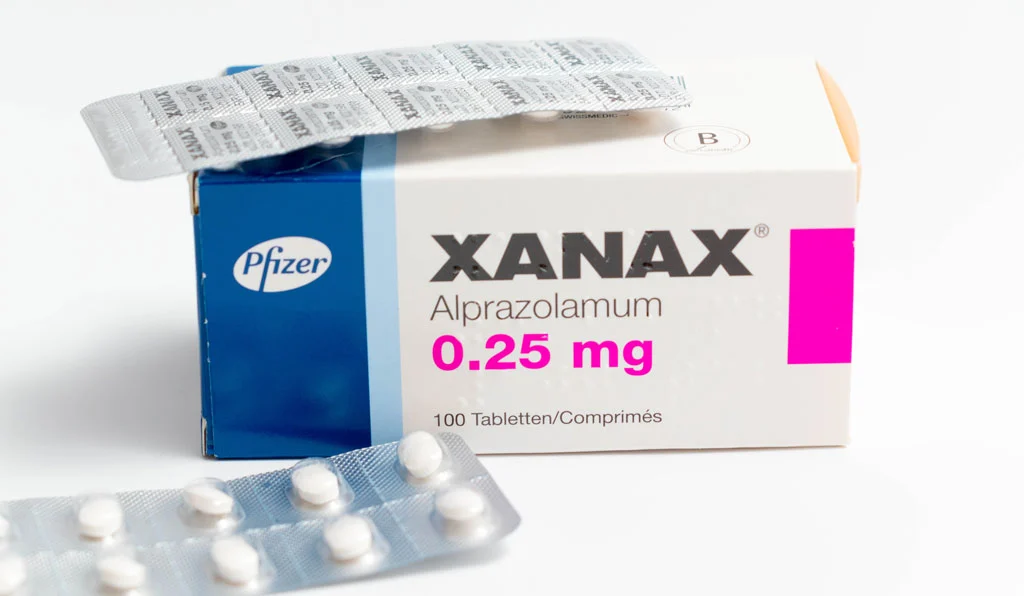
It’s difficult to prepare for the fact that a medication you’ve taken for years may cause some of the most intense withdrawals any individual has ever experienced. These withdrawals are so severe that they’ve even led to fatalities in the most serious cases.
However, this is the hard truth about the prescription medication Xanax. The withdrawals caused by this medication are some of the most severe of all substances and belong to a category of drugs only joined by alcohol because they can be fatal.
The Difficulties of Xanax Withdrawals
It can be extremely difficult to weather the challenges caused by this medication’s detox process and withdrawal symptoms. Not only is it difficult, but it’s not recommended from a medical standpoint.
Despite all of this, if you’re suffering from Xanax abuse disorder, it’s important to understand the fact that there are options available for recovery. With the right avenues and methods of treatment, plenty of users have taken their lives back and returned to a normal life, managing anxiety and other challenges without the chains of Xanax.
For the uninitiated and unaware, it can be difficult to understand the reality of Xanax addiction. In the following section, you’ll learn about what Xanax is and what the withdrawal period consists of.
What Is Xanax?
Xanax is a prescription medication that belongs to a class of drugs known as benzodiazepines. Other common benzodiazepines include Klonopin, Valium, and Ativan.
The generic name for Xanax is alprazolam, and it’s commonly prescribed for anxiety and panic disorders. Xanax works by attaching to the GABA-A (gamma-aminobutyric acid-A) receptors in the body, eliminating or slowing down feelings of anxiety, nervousness, and panic.
There are five different types of anxiety disorders, some of which Xanax is typically prescribed. The following list highlights these five disorders.

Generalized Anxiety Disorder
Generalized anxiety disorder normally includes acute periods of intense anxiety. It’s a chronic condition and also triggers exaggerated worry and tension, even in situations where these feelings aren’t warranted. This condition is one of the most common for which Xanax is prescribed.
Obsessive-Compulsive Disorder (OCD)
Obsessive-Compulsive Disorder is a type of anxiety disorder and includes repeating unwanted thoughts and constantly repeated behaviors. Some of the repetitive behaviors include hand washing or sanitizing, counting, checking, and cleaning. Constant thoughts of these actions trigger repetitive behaviors.
The individual engages in these repeated behaviors in an effort to prevent the constant thought of them. Not performing these activities causes extremely high levels of anxiety. Xanax is not commonly prescribed for OCD.
Panic Disorder
Panic disorder is another type of anxiety disorder that is highlighted by unexpected and constant periods of extreme fear that include physical side effects like chest pain, increased heart rate, dizziness, trouble breathing, and abdominal pain. Xanax is written for panic disorder in some cases.
Post-Traumatic Stress Disorder (PTSD)
PTSD is another anxiety disorder that individuals develop after being exposed to a traumatic event that caused severe physical harm or the potential for harm. These traumatic events that cause PTSD may include violent physical or sexual assaults, natural disasters, car accidents, and war. Xanax is commonly prescribed for PTSD.
Social Phobia (Social Anxiety Disorder)
Social anxiety disorder is another common form of anxiety disorder that includes intense anxiety during normal social environments. These periods of anxiety can be limited to certain types of occasions, such as public speaking or eating in front of others. However, in the most intense forms of this disorder, individuals may experience episodes around other people.
Xanax may calm many of the negative symptoms associated with these disorders. Other benzodiazepines have a similar effect. However, Xanax is considered one of the most potent and certainly has a large potential for abuse.
Xanax Withdrawals vs. Klonopin vs. Ativan
How does Xanax measure against other benzodiazepines?
Xanax
Xanax is a short-acting benzodiazepine that acts rather quickly. Normally, Xanax is prescribed for anxiety and panic disorder in conjunction with depression. It’s taken in frequent doses throughout the day and can be used as needed during acute anxiety attacks.
Klonopin
Klonopin is another drug that belongs to the benzo family. Unlike Xanax, Klonopin has a very long-acting period of effectiveness, often lasting for 12 to 15 hours. It takes much longer to take action on the body but requires less frequent dosing. Klonopin is also prescribed off-label for alcohol withdrawal.
Ativan
Ativan is a brand name for the generic drug lorazepam. This drug is very similar to Xanax in the way it acts against anxiety. However, Ativan takes slightly longer than Xanax to take effect but lasts longer. Ativan is effective for an average of eight hours, while Xanax has an average of six.
The way each of these drugs acts produces a calming effect on the brain. However, the problem is the actions Xanax takes on the brain cause a complete rewiring of the brain’s functions.
This rewiring leads to incredibly intense withdrawal symptoms during the detoxification process.
Does Xanax Cause Withdrawals?
After an extended period of use, the abrupt discontinuation of Xanax can lead to intense withdrawal symptoms. These side effects are wide-ranging and can last for extended periods.
It’s important to be aware of the specific signs of Xanax withdrawal in order to prepare for their occurrence. The symptoms of Xanax withdrawal are included in the following section.
Signs of Xanax Withdrawals
There are multiple signs and symptoms associated with Xanax withdrawal. Individuals should be aware of the presence of the following signs:
- Muscle aches and tremors
- Nausea
- Dizziness
- Paranoia
- Vertigo
- Intense cravings
- Insomnia
- Increased heart rate
- High blood pressure
- Seizures
Besides the potential for seizures, one of the most intense side effects of Xanax withdrawal is rebound anxiety. Rebound anxiety is the intense and rapid return of anxiety after an extended period of remission.
After the mind and body are used to the symptoms of anxiety being kept at bay, but an individual has an affinity for these symptoms, discontinuing Xanax causes them to rush back with heavy intensity. This period of rebound and anxiety can lead to further complications with blood pressure and increased heart rate.
These additional complications are several side effects that can lead to fatality caused by Xanax withdrawal.
Can You Die from Xanax Withdrawal?
In the most difficult situations, Xanax withdrawal has led to fatality cases. Multiple side effects of withdrawal normally cause the most significant potentially fatal challenges.
The most significant is the potential for seizures. These seizures may occur back to back if medical treatment isn’t available, which can lead to brain damage, coma, and death.
Additionally, challenges associated with rebound anxiety may also lead to potentially fatal situations. It’s vital to remain aware of the challenges associated with Xanax withdrawal, as well as the timeline.
Xanax Half-life and the Withdrawal Timeline
The half-life of Xanax is critical for understanding when to expect withdrawal symptoms to occur. A half-life of a substance is the approximate time it takes for half of the concentration of the substance to exit the body.
Once half the concentration is reached, the leftover amount is continuously measured by half until a concentration level of zero is reached. When a substance reaches a level of zero concentration, the detox period begins, and users can expect withdrawal symptoms to occur.
The half-life of Xanax is around 11 hours. However, a substance has around four or five half-lives, which means it takes Xanax about 50 hours or two and a half days to exit the body completely.
This means that normally it takes two days for Xanax withdrawal to begin. The following is an example of the Xanax withdrawal timeline:
Days 1 and 2
The first and second days include increased anxiety and elevated heart rate. Users may also begin to experience periods of sweating and stomach cramps. Users will experience dizziness. Insomnia and restlessness will also start to become issues.
Days 3-8
Users will experience increased symptoms of vertigo and dizziness. Rebound anxiety has fully kicked in at this point, as users experience challenges with increased blood pressure and heart rate. It may be impossible to concentrate, and users may experience hallucinations and psychosis.
Days 9-12
During this period, users will experience the highest risk of seizures. Rebound anxiety is still prevalent, and insomnia continues to make sleep difficult to impossible.
Days 13-21
Symptoms will begin to decrease in severity at this point, but general anxiety and restlessness may still remain. Insomnia can still be a challenge, but users can expect side effects to decrease in intensity daily.
Protracted Withdrawal from Xanax
Protracted withdrawal is the occurrence of withdrawal symptoms for several months after detox. Many long-term users report these symptoms lasting for up to 12 months. These symptoms include depression, anxiety, and periods of dizziness.
There are dietary steps individuals can take to decrease the severity of the withdrawal period.
The Importance of Diet in Managing Xanax Withdrawal
Diet is extremely important during Xanax withdrawal. Certain foods are known to increase GABA proteins that can assist in the lack of the body’s natural production.
After extended periods of Xanax abuse, the body gets used to GABA coming from the ingestion of Xanax. This means that once the use is discontinued, the body initially has no source for these proteins until natural production begins as time goes on.
Foods that are known to increase this production include:
- Eggs
- Yogurt
- Tomatoes
- Black and green tea
Certain supplements like kava, passionflower, phenibut, and other products will work as well.
While diet helps, there’s no substitute for medically-supervised detox for Xanax withdrawal.
Medically-Supervised Detox for Xanax Withdrawal
Medically-supervised detox is critical for Xanax withdrawal. Clients have access to 24/7 medical supervision where they can remain stabilized throughout the ordeal.
This medical supervision is important, especially considering the fact that seizures may occur. Additionally, medical staff can administer certain medications to assist with the severity of rebound anxiety.
Clonidine and other medications can be effective during the medically-assisted detox process. Certain sleep aides, natural supplements, and other prescription medications may also provide relief.
Alternatively, clients may also experience greater success by choosing a Xanax tapering schedule. Instead of the abrupt discontinuation of Xanax, clients can gradually decrease their intake over the course of six to eight weeks.
An effective tapering schedule can eliminate the most intense severity of withdrawals. Clients may also choose to receive alternative forms of anxiety treatment with alternative medications.
Xanax Withdrawal and Anxiety Disorder Treatment
Certain medications exist that may provide relief during the absence of Xanax. Options include the following:
- Buspar (Buspirone)
- Fluoxetine (Prozac)
- Citalopram (Celexa)
- Beta-blockers (Blood pressure medications)
- Hydroxyzine (Prescription antihistamine)
Diphenhydramine (Benadryl) is an over-the-counter antihistamine that may also provide relief for anxiety. It’s important to consult with mental health professionals and your primary care physician before deciding on any regimen for anxiety relief.
Because of the severity of Xanax withdrawals, many individuals who suffer from Xanax abuse disorder question whether long-term recovery is possible.
Is Long-term Recovery from Xanax Possible?
Long-term recovery from Xanax is possible with the right approach to treatment. A healthy combination of a medically-assisted detox, inpatient treatment, outpatient treatment, and aftercare services is the solution leading to long-term recovery.
Inpatient and outpatient treatment consist of a combination of mental health and substance abuse counselors crafting a personalized treatment plan specific to each client. Anxiety is treated with various forms of behavioral and talk-therapies, which is also effective for the mental elements of substance abuse.
Aftercare services are critical when it comes to treatment for Xanax abuse disorder. Continued treatment for anxiety at a mental health practice must be continued long after treatment is over. Group recovery meetings are also recommended for long-term participation in order to promote long-term recovery.
Additionally, family members are encouraged to participate in group counseling sessions. A strong support system must also be in place after graduation from treatment to continue the encouragement of recovery.
All of these services are available at the right treatment facility. Selecting the appropriate facility is one of the most critical building blocks during recovery.
Foundations for Lasting Xanax Recovery at Circle of Hope
At Circle of Hope Treatment, our clinical staff have all the elements in place to help you navigate the intense process of Xanax recovery. From medically-assisted detox to tapering schedules all the way through the treatment process until aftercare, our compassionate staff is prepared to assist you every step of the way.
Our medical staff specializes in providing efficient treatment during the medically-assisted detox process until each client is prepared to move to the inpatient process of treatment. Our mental health and substance abuse specialists work closely with each client, preparing them for graduation by crafting an aftercare program while simultaneously providing constant education regarding mental health and substance abuse.
To find out how we can help you experience long-term recovery from Xanax abuse disorder, contact a member of our admissions team. They are waiting to handle all of your questions and get you started on the road to recovery, so please call now and put Xanax withdrawal behind you for good.

